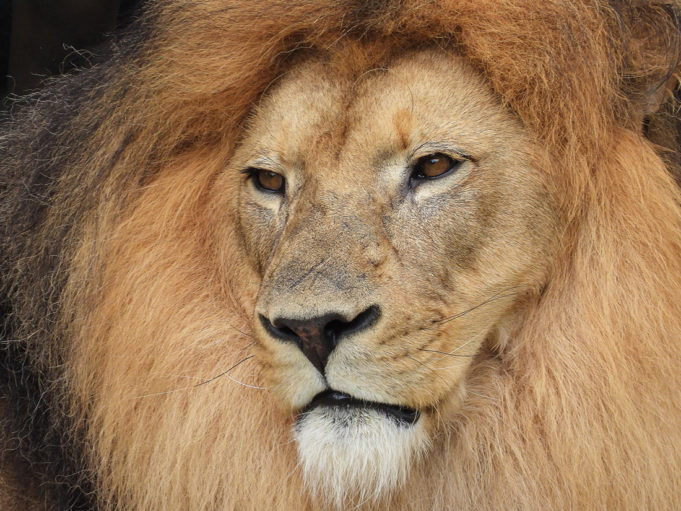How close will you ever get to the proverbial king of the jungle? Inches away might be the answer during a visit to the Fort Worth Zoo’s new Predators of Asia and Africa exhibit.
Only a heavy pane of glass separates guests from Jabulani, the zoo’s male lion, and his two females, Saba and Abagebe.
Lions are one of the first animals visible upon entering the facility. They are often seen playing together or lounging in the sunlight with their golden fur glowing against the lush greenery of their large habitat.
Some of them like to rest near the massive window, and here’s a secret why: The rock below the window has a cooling feature to keep them comfortable during the sweltering Texas heat, said Avery Elander, the zoo’s director of marketing and public relations.
The $33 million exhibit opened in June and marks the third phase of the zoo’s $130 million capital plan called A Wilder Vision.
The lion’s new area is about five times bigger than their former habitat and features waterfalls, large rocks, and at least three different ways to view the big cats. In addition to the large glass window, Predators features an air-conditioned “safari bus” with windows that provide a view into the habitat. Finally, guests can see the lions from an elevated walkway that overlooks a large waterfall above the exhibit.
Other Predators species include cheetahs, African painted dogs, two hyenas, and two Sumatran tigers. Clouded leopards and African leopards are also part of the exhibit and are new to the zoo, Elander said.
The area also has 1,500 gallons of recirculated water, 170 trees, 75 plant species, and “approximately 300 claws and 596 teeth.”
Behind the animals are the zoo staff who care for them every day.
“We try to train them behaviors that help us take better care of them,” said zookeeper Lindey Duncan, “and that includes anything we can do to make it easier for them, less stressful, and to give information to our vet staff that they need.”
The animals voluntarily participate in training, which can include teaching them how to stand so areas of their body and feet can be checked for an overall physical view of them, Duncan said.
One of the key behaviors is learning how to accept an injection.
“We can train them to take an injection very calmly so the results of any bloodwork collected for the vets is not altered by any of their stress levels going up,” Duncan said.
Most of the animals are also trained to stand on a scale to note any changes in their weight and allow the nutritionist to modify their diets, if needed, said Holly Kelton, who oversees Predators.
Depending on his weight and other factors, Jabulani can eat up to 10 pounds of meat a day, Kelton said. The females can eat 6 to 8 pounds per day.
The animals have their own personalities, and the female black African leopard, Carolina Reaper, received her name because of her “spicy” attitude, Duncan said.
The African Savanna opened in 2018 as the first phase of A Wilder Vision, followed by Elephant Springs in 2021. Next up for the zoo is Forests and Jungles of the World, an area that will be home to species such as the okapi, bongos, and orangutans. An opening date is not yet set.
“It’s just so important to provide people with opportunities to see these animals that they likely may not have a chance to see otherwise,” Elander said. “How many times will people ever have the opportunity to see a lion in the wild?”
Some of you may remember the story we published about a year ago that featured JJ, the striking male mandrill at the Fort Worth Zoo. Well, the story continues here in Creature Comforts 2023.












